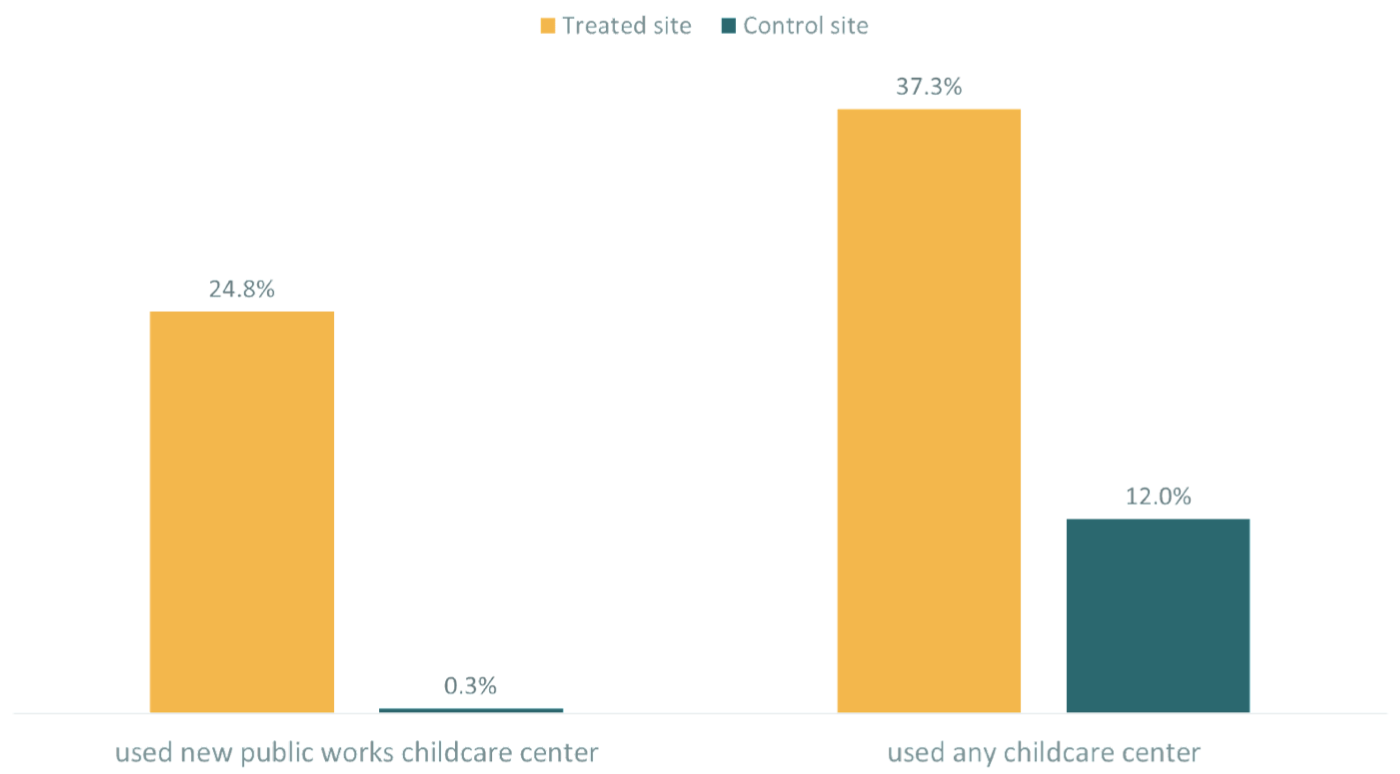Recommended
There is compelling evidence to show that supporting children’s development and enhancing women’s participation in economic activity increase economic development, reduce poverty, and improve household wellbeing. Providing affordable, quality childcare contributes to both.
However, research and policymaking relating to childcare often occurs in siloes—with one group of people interested in improving early childhood development (ECD) and another group of people interested in supporting women’s economic empowerment. Because of these siloes, few policies, programs, or research studies connect the vision of nurturing and caring for children with the vision of encouraging women’s employment and economic wellbeing. In a new paper, we bridge this gap to examine whether community-based childcare centers can improve early childhood development and increase women’s economic empowerment.
The setting of our study
We collaborated with the government of Burkina Faso as they implemented a youth employment program, which recruited young people aged 18 to 35 to participate in labor-intensive public works for six months of guaranteed employment. The program team identified 36 urban worksites that could potentially host a childcare center. We then randomly selected 18 sites to receive a childcare center, with no childcare introduced in the remaining 18 sites. All 18 community-based childcare centers were established as planned during the six-months public works, and they continued operating after the public works ended. Each center could serve up to 50 children and was staffed by seven to 10 public works participants who received three days of training to operate the childcare centers, instead of doing the labor-intensive public works along with the other program participants.
To estimate the program’s impacts, we interviewed a sample of around 2,000 female public works participants with children aged six or under, split between the 18 sites with and without childcare centers. Fourteen months after the childcare centers opened, we tracked down the same women to find out if they had used the childcare centers and to ask about their economic activities; their broader wellbeing; and their children’s development. The COVID-19 pandemic broke out midway through our study, so the childcare centers closed for four months, but they were up and running again by the time we went back to talk with program participants in February 2021.
Families used the childcare centers
Our first finding is that these community-based childcare centers expanded access to childcare. About 25 percent of program participants in worksites with the new childcare centers used them at least once over the past year. There were some other childcare services available, so 12 percent of households in the control group had used any childcare centers in the past year. But the share of families using any childcare centers was almost three times higher in the sites with the new childcare centers—it increased to 37 percent. Although some families stopped using the new childcare centers once the public works program ended, the gap between the two groups persisted, with 10 percent of households in the control sites using a childcare center in the past 24 hours before our follow up survey and almost 22 percent of households in the treated sites using one.
Figure 1. Use of childcare centers over the past 12 months

What happened to women and children who used the new childcare centers?
Figure 2. Effects of the childcare centers

Women’s employment and financial outcomes improved, and so did their psychosocial well-being
Women in the sites with childcare centers had improved employment outcomes, with 0.08 standard deviation gains on average. They spent 18 percent more time engaged in paid work, and they had higher monthly earnings from salaried jobs. Part of this shift in work resulted from some women being directly employed to work in the childcare centers (67 of the 928 women we interviewed in the sites with new childcare centers ended up working as childcare providers in the new centers). But we still see improved outcomes for women who weren’t working in the childcare centers, which suggests that change occurred at least in part by freeing up women’s time to work. In addition to women working and earning more, they had better financial outcomes (with increased savings and an improved ability to get cash in an emergency). We also find some evidence of improvements in mental health, a dimension often overlooked in studies investigating the effects of ECD interventions.
Women’s agency did not change
So, women were working more and earning more, but did this improved employment shift how much control they had over household decisions or transform their gender attitudes? Apparently not. We don’t see any significant changes in women’s involvement in decision-making in the household, their attitudes toward gender, their freedom of movement, or their partners’ involvement in childcare and other household activities. Why didn’t these things change? Perhaps they’re sticky and take time to evolve. Or perhaps having more income isn’t enough to shift the balance in decision-making power. There’s more work to be done here to fully understand what shapes intrahousehold dynamics.
Child development improved
Let’s turn to look at the children now, were they better off? Children in sites with the new childcare centers had improved early childhood development scores, with a 0.2 standard deviation gain on average. These gains primarily showed up in gross and fine motor skills, with no increases nor deterioration in language development. It’s worth noting that the childcare centers were closed for a third of the time we study, so these positive impacts on child development might have been even higher without the COVID-19 disruptions.
Policy implications
Altogether, our results provide promising new evidence that offering childcare has the potential to positively impact both women and children. However, there’s still more room for change—women’s decision-making agency and partners’ involvement in domestic tasks didn’t budge at all.
A final thought—was the program cost-effective? The childcare centers essentially paid for themselves. The monthly cost of operating each center was USD 16.6 per child if they were running at full capacity. The centers typically had around 33 children enrolled instead of the maximum 50, which raised operating costs to USD 25.2 per child on average. Women who used the childcare centers earned an extra USD 23 to 25 per month (based on estimates of the effects of the treatment on the treated). If we factor in any additional benefits from children’s improved development, then the social gains would be even higher.
Are there other childcare models that could have positive impacts on multiple outcomes? Undoubtedly! Hopefully this is the start of more policymakers, practitioners, and researchers thinking holistically about how to integrate women’s empowerment with early child development.
Disclaimer
CGD blog posts reflect the views of the authors, drawing on prior research and experience in their areas of expertise. CGD is a nonpartisan, independent organization and does not take institutional positions.






